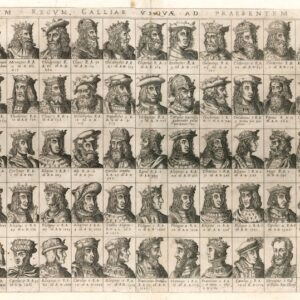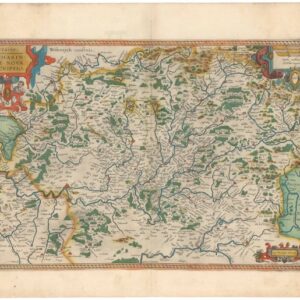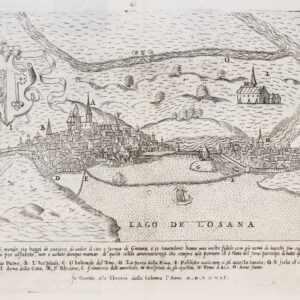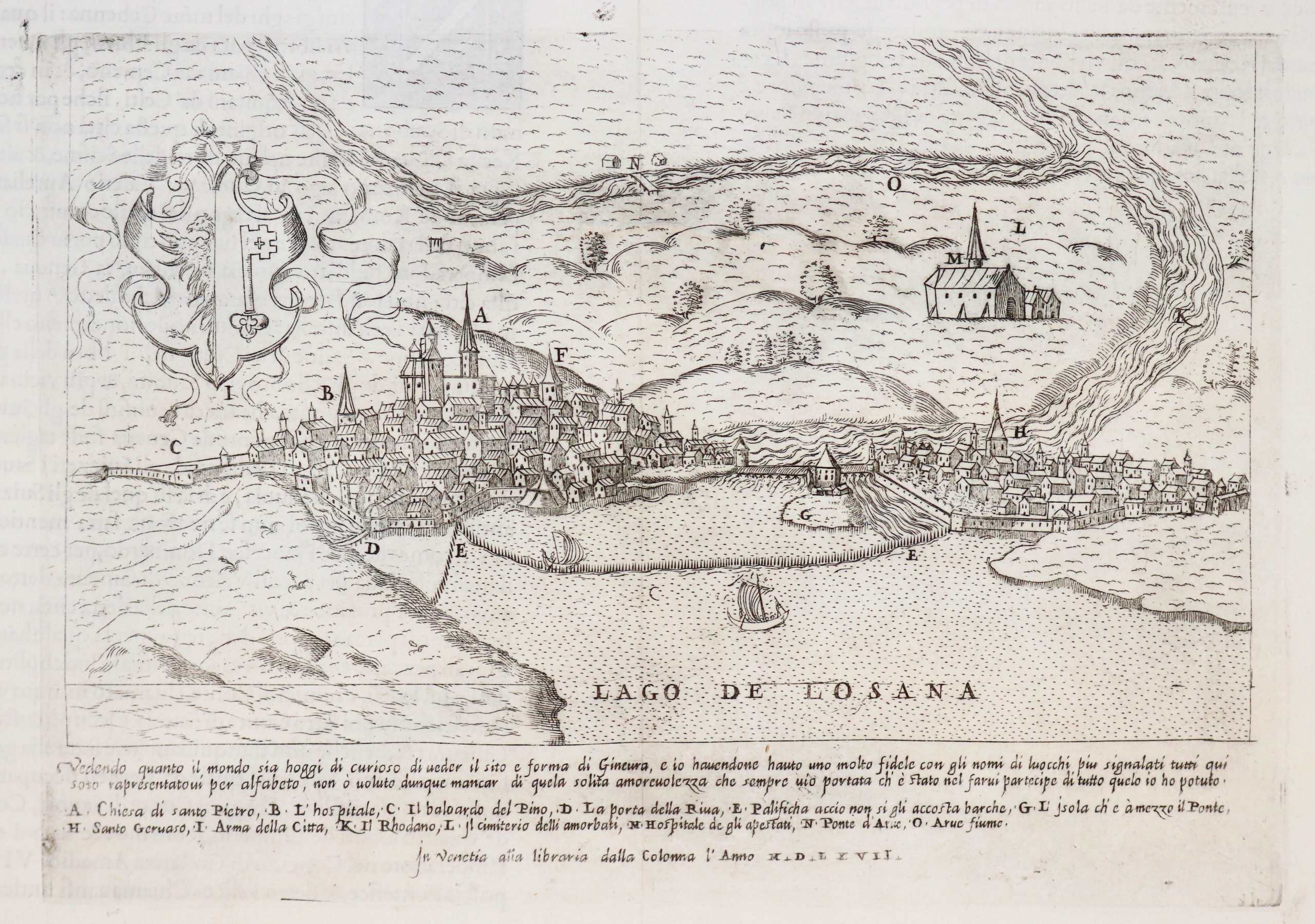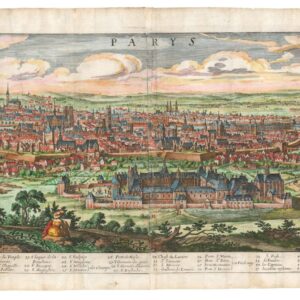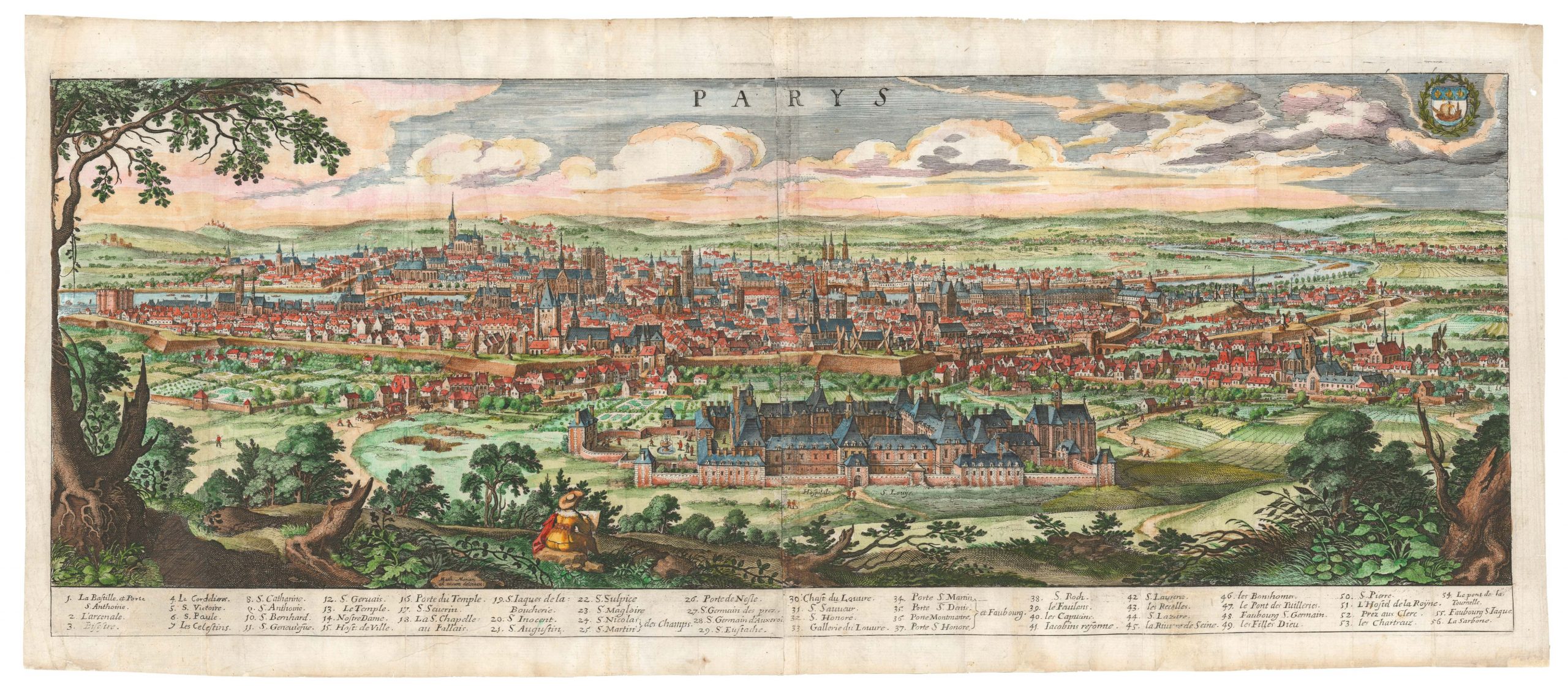One of the earliest printed maps of Switzerland.
Die Eidtgnoschafft oder Schweitzerlandt mit den anstossenden Ländern.
Out of stock
Description
This double-page map of Switzerland appeared in the 1567 edition of Sebastian Munster’s Cosmographia.
Forming part of a trio of double-page maps in the Cosmographia tracing the entire course of the Rhine. All three maps are oriented towards the west thus here, Freiburg and the Schwarzwald appear at the right, Basel towards the top-right, Bern at the top, Zurich, Zug, and Lucerne near the center, and Konstanz at the center. Munster lived most of his adult life in Basel and updated the map over time based on his observations. Roads, towns, cities, lakes, and other features are noted throughout, including illustrations like the black bear near Bern, the canton’s heraldic symbol.
This map appeared in the 1567 German edition of Munster’s Cosmographia.
Cartographer(s):
Sebastian Münster (1488-1552) was a cosmographer and professor of Hebrew who taught at Tübingen, Heidelberg, and Basel. He settled in Basel in 1529 and died there, of the plague, in 1552. Münster was a networking specialist and stood at the center of a large network of scholars from whom he obtained geographic descriptions, maps, and directions.
As a young man, Münster joined the Franciscan order, in which he became a priest. He studied geography at Tübingen, graduating in 1518. Shortly thereafter, he moved to Basel for the first time, where he published a Hebrew grammar, one of the first books in Hebrew published in Germany. In 1521, Münster moved to Heidelberg, where he continued to publish Hebrew texts and the first German books in Aramaic. After converting to Protestantism in 1529, he took over the chair of Hebrew at Basel, where he published his main Hebrew work, a two-volume Old Testament with a Latin translation.
Münster published his first known map, a map of Germany, in 1525. Three years later, he released a treatise on sundials. But it would not be until 1540 that he published his first cartographic tour de force: the Geographia universalis vetus et nova, an updated edition of Ptolemy’s Geography. In addition to the Ptolemaic maps, Münster added 21 modern maps. Among Münster’s innovations was the inclusion of map for each continent, a concept that would influence Abraham Ortelius and other early atlas makers in the decades to come. The Geographia was reprinted in 1542, 1545, and 1552.
Münster’s masterpiece was nevertheless his Cosmographia universalis. First published in 1544, the book was reissued in at least 35 editions by 1628. It was the first German-language description of the world and contained 471 woodcuts and 26 maps over six volumes. The Cosmographia was widely used in the sixteenth and seventeenth centuries and many of its maps were adopted and modified over time, making Münster an influential cornerstone of geographical thought for generations.
Condition Description
Discoloration, wear, and some infill along centerfold. Light soiling in the margins. Chip along left edge.
References
